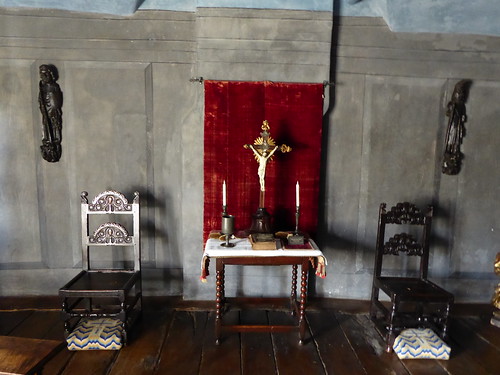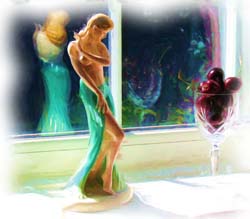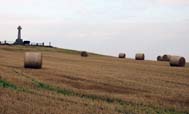For two days, in September 1651, the destiny of Britain was decided within the walls of Moseley Old Hall.
In January 1649 Charles I had been executed in Whitehall, the monarchy had been abolished and the country declared a Commonwealth. The hopes of the Royalist Cause now rested on the shoulders of his eighteen-year-old son, Charles II, who was in exile in France. In the late summer of 1651 Charles marched south from Scotland with an army of 16,000 men in a final effort to reclaim the throne. But on 3 September outside Worcester his army was annihilated, and for the next 41 days he was on the run, with a price of £1000 on his head.*
Early on the morning of 8 September the bedraggled figure of the King arrived at the back door of Moseley Old Hall. He had had no sleep and little to eat since the day of the battle. He was disguised in rough woodsman’s clothes with ill-fitting shoes that made his feet bleed. He was cold, wet and desperate. Standing waiting to greet him were the owner of the house, Thomas Whitgreave, and his priest, Father Huddleston.
Like many in this area of Staffordshire, Whitgreave was a Catholic, and his mother Alice, who was also in the house, had suffered heavy fines for their faith from the Parliamentary authorities. They welcomed the King inside, gave him dry clothes and food, and found him a safe hiding place in one of Moseley’s ‘priest’s holes’. Here he crouched the following afternoon, while Whitgreave confronted a Parliamentary search party in the road outside.*
The priest hole was hidden beneath a cupboard which was either a garderobe of a wardrobe.
In the floor of the cupboard is a trap-door concealing the hiding place below, some 4ft 6in by 5ft and only 4ft high, a cramped space in which Charles, who is believed to have been ‘over two yards high’, spent an uncomfortable time when Parliamentarian soldiers came to the house. Whitgreave tells us that, after being presented to the King in his room, Charles asked him ‘where is the secret place my lord [Wilmot] tells me of?’ On being shown the hide, he entered it ‘and when came forth, said itt was the best place hee was ever in’.*
Having devised a practical plan of escape Charles left the house two days later.
As well as a priest hole the house had a chapel in one of the upper rooms of the house.
John Huddleston took the King up to see the Chapel during his stay at Moseley. Charles described it as a ‘very decent place’ and told Huddleston that if he ever regained his throne, Catholics would no longer have to worship in secret. Charles married a Catholic, but as part of his efforts to reconcile the anti-Catholic majority, professed a moderate Anglican faith, unlike his openly Catholic brother, James, who was driven from the throne in 1688 because of his religion.
The Chapel, or more properly the Oratory, did not look as it does now when Charles saw it in 1651. The roof was open to the rafters, and is said by tradition to have once contained a secret hiding place, although there is no evidence of it. The barrel-vaulted ceiling was added following the Relieving act of 1791, which allowed Catholics greater freedom of worship.*
*From the National Trust guide book to Moseley Old Hall 1997 revised 2000. The photo of the priest hole was also taken from the same guide book (all other photos are my own as usual).














The gardens are just stunning in the summer aren’t they.
Yes they are
That garden is something else. Well kept so to see and the buxus are well trimmed. The inside of the house is something else, what a beauty and that hidden priest hole looks very special to me.
It is a lovely house, one you actually imagine living in. The gardens are very pretty.
this is a wonderful presentation of “Moseley Old Hall” Cheryl… i really like your pictures of the small chapel….peter:)
Thank you, the small chapel is wonderful
i loved the gardens, CP. and the text was very interesting too.
The gardens are quaint, I particularly like the chapel
the bedraggled figure of the King arrived at the back door of Moseley Old Hall.
Yet to be King?
He was the King but not accepted as such. Politics, always a dirty business.
Really interesting post and super photos. Would so love to visit Moseley Old Hall looks a wonderful and fascinating house
If you get a chance, visit it Boscobel house too. The properties share the history of this time. I will post on Boscobel House soon.
No more fun… You’ve found the secret door.
Finding the secret door leads to adventures beyond